




Joints are the connection between two bones that allow you to turn your head, bend your elbows, do the shimmy, wiggle your hips and wave goodbye.

The most common type of joint in your body is the synovial joint, which can be found in your knees and knuckles. Synovial joints allow for movement and they are filled with synovial fluid, which acts as a lubricant to protect the ends of the cartilage of your bones from rubbing against each other and wearing out.
When this happens, it is even easier to suffer more damages, as with most joint injuries. The most common and serious consequence would be the development of Osteoarthritis, or degenerative joint disease.


Osteoarthritis is the most common form of arthritis. It is estimated to affect about 40% of the adults. Yet, only 10% of the population seeks medical attention and about 1% is severely disabled. In the morning, the symptoms of Osteoarthritis are not felt. However, as the day passes, the pain or discomfort increases.
SYMPTOMS INCLUDE |

Pain
During or after movement, joint pain is felt.

Soreness
When light pressure is applied to your joints, they are sensitive to pain.

Stiffness
Joint stiffness is felt when waking up or after a period of rest and inactivity.

Inflexibility
Joints are unable to move in their maximum range of motion without experiencing stiffness or pain.

Grating sensation
When moving your joints, you hear or feel a grating sensation.

Bone spurs
Bone spurs or osteophytes are outgrowth of bone that can occur along the edges of a bone they feel like hard lumps forming around your joints.

FOOD |

Food rich in antioxidants like berries help to fight off damage from free radicals.

Vegetables rich in Vitamin A like carrots and broccoli can help reduce inflammation.

Oily fish like salmon contain Omega-3 fatty acids, which can relieve joint pain and stiffness.
EXERCISE |
Exercising helps to strengthen the supporting muscles around your joints, helping to better support and cushion your joints from damages.

Walking is simple, and is great for people with rheumatoid arthritis.

Swimming is a great sport to stretch your muscles and soothe your joints.

Strength training is a great place to start building muscles. The stronger your muscles are, the less strain there is on your joints.
GOOD MATTRESS |

According to a study conducted on patients suffering from lower back pain, medium-firm mattresses are the best for back pain relief.
VITAMIN D |

Studies have linked Vitamin D deficiency with rheumatoid arthritis as well as Osteomalacia, or the softening of bones.
GLUCOSAMINE |

Glucosamine is naturally found in our joints and can help reduce pain associated with the wear and tear of our joints.
HYALURONIC ACID |

As we age, we lose Hyaluronic Acid present in our bodies. This appears to affect the mobility of our joints. Taking Hyaluronic Acid can help to increase the synovial fluid to reduce stiffness.
CHONDROITIN |

Chondroitin is usually taken with Glucosamine to help with the pain caused by the wear and tear of the joints. It reduces inflammation of the joints as well as improves joint functions.
METHYLSULFONYLMETHANE |

Methylsulfonylmethane (MSM) helps to stimulate the body in forming new joint and muscle tissues while reducing inflammation. In fact, a clinical trial on 118 patients with Osteoarthritis found that MSM taken over 12 weeks improved their joint mobility and reduced pain and swelling.
FISH OIL |

Fish oil contains EPA and DHA, which have natural anti-inflammatory effects. The Omega-3 fatty acids also help to increase blood flow during exercise and reduce symptoms of stiffness and joint pain.
COENZYME-Q10 |

Naturally produced in the body or from diet, Coenzyme-Q10 improves tolerance of physical exertion and provides comfort to people with muscle disorders.
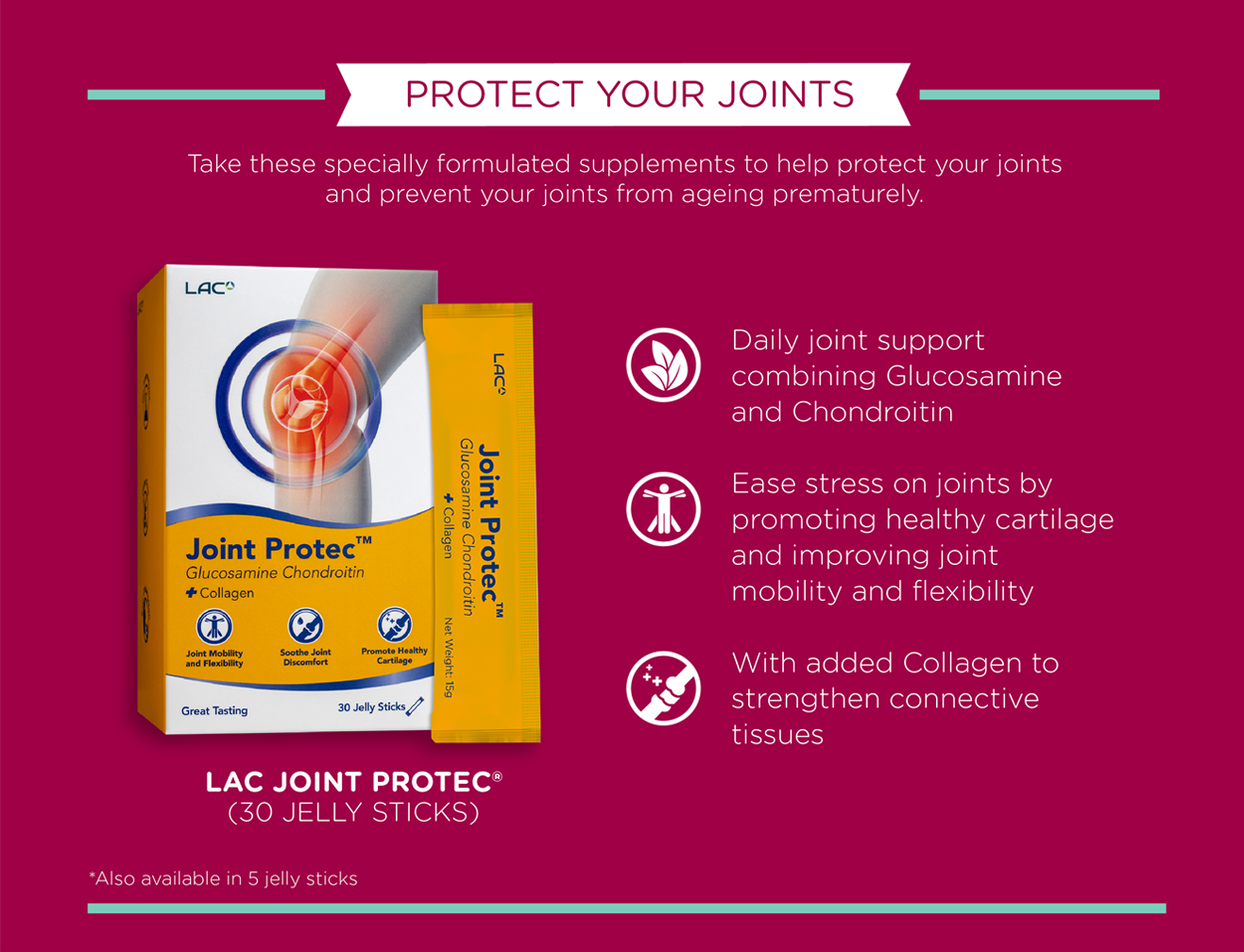
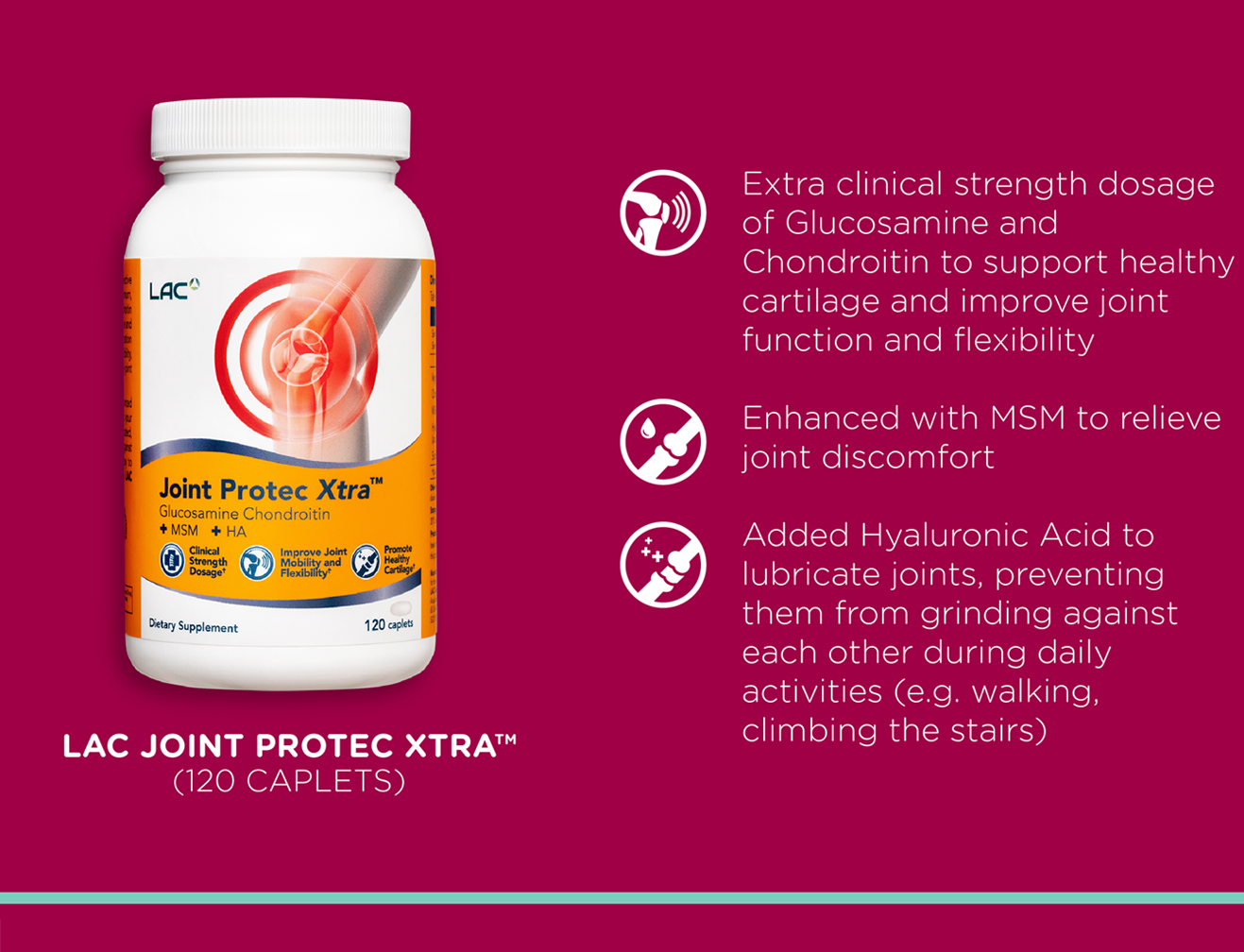
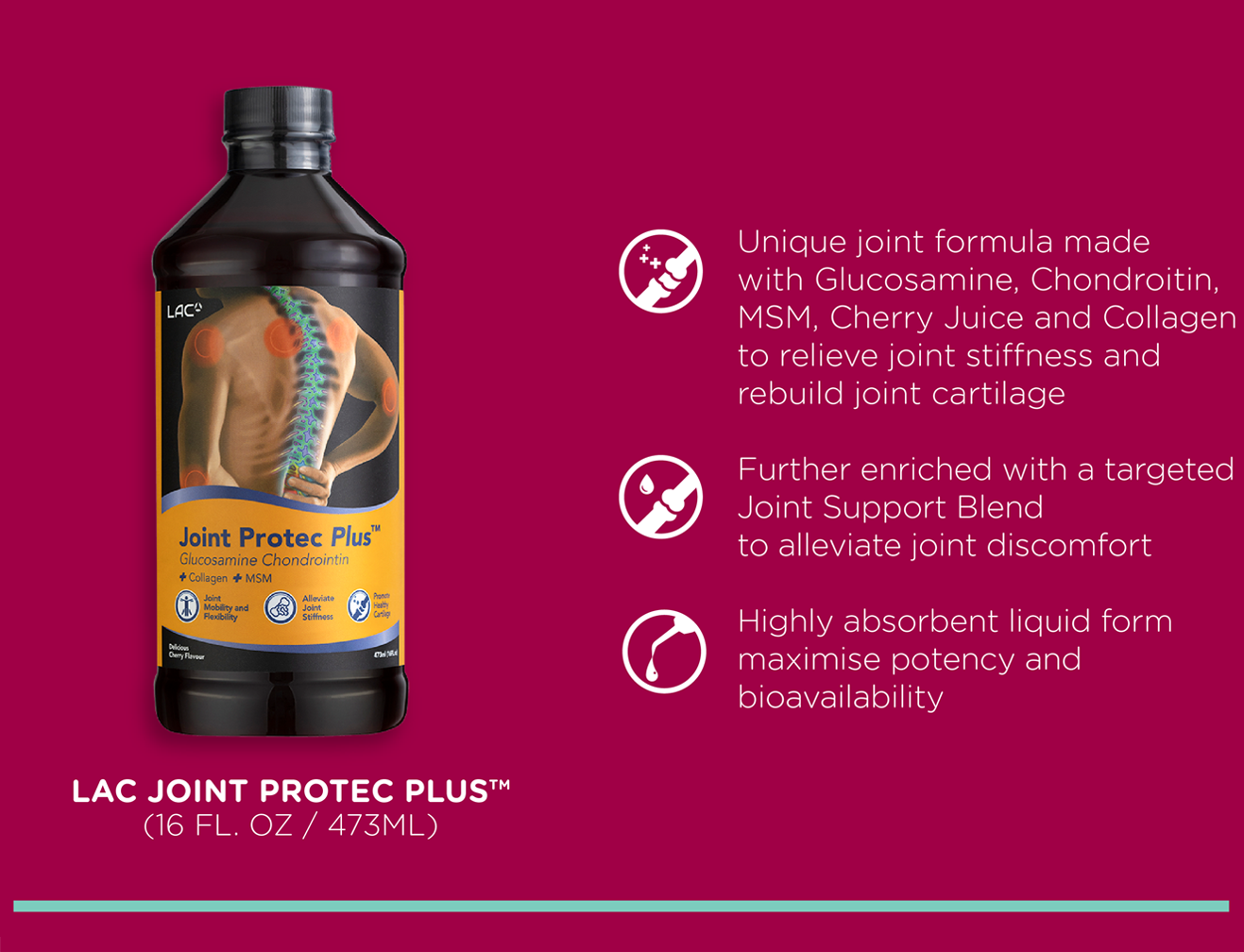
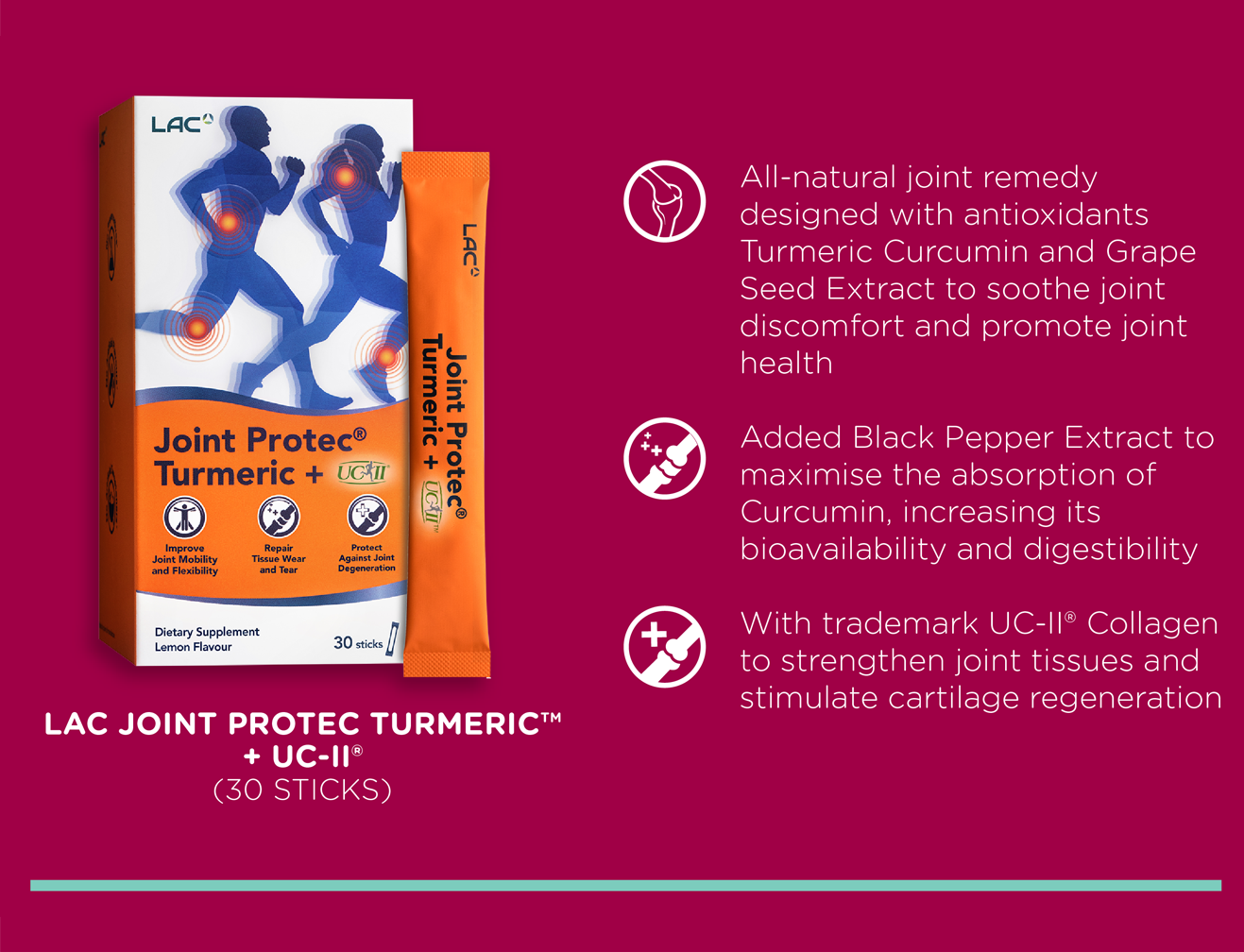
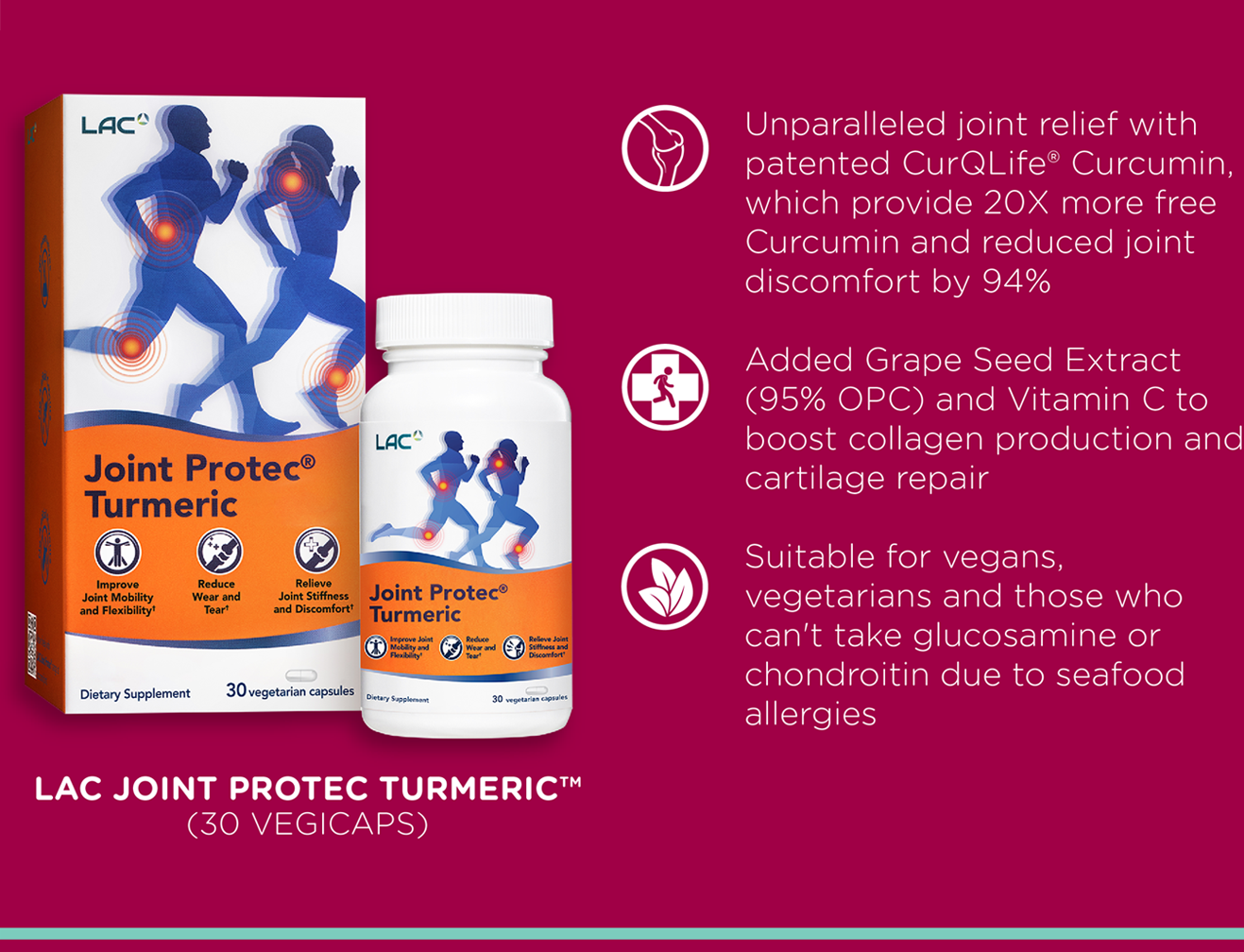
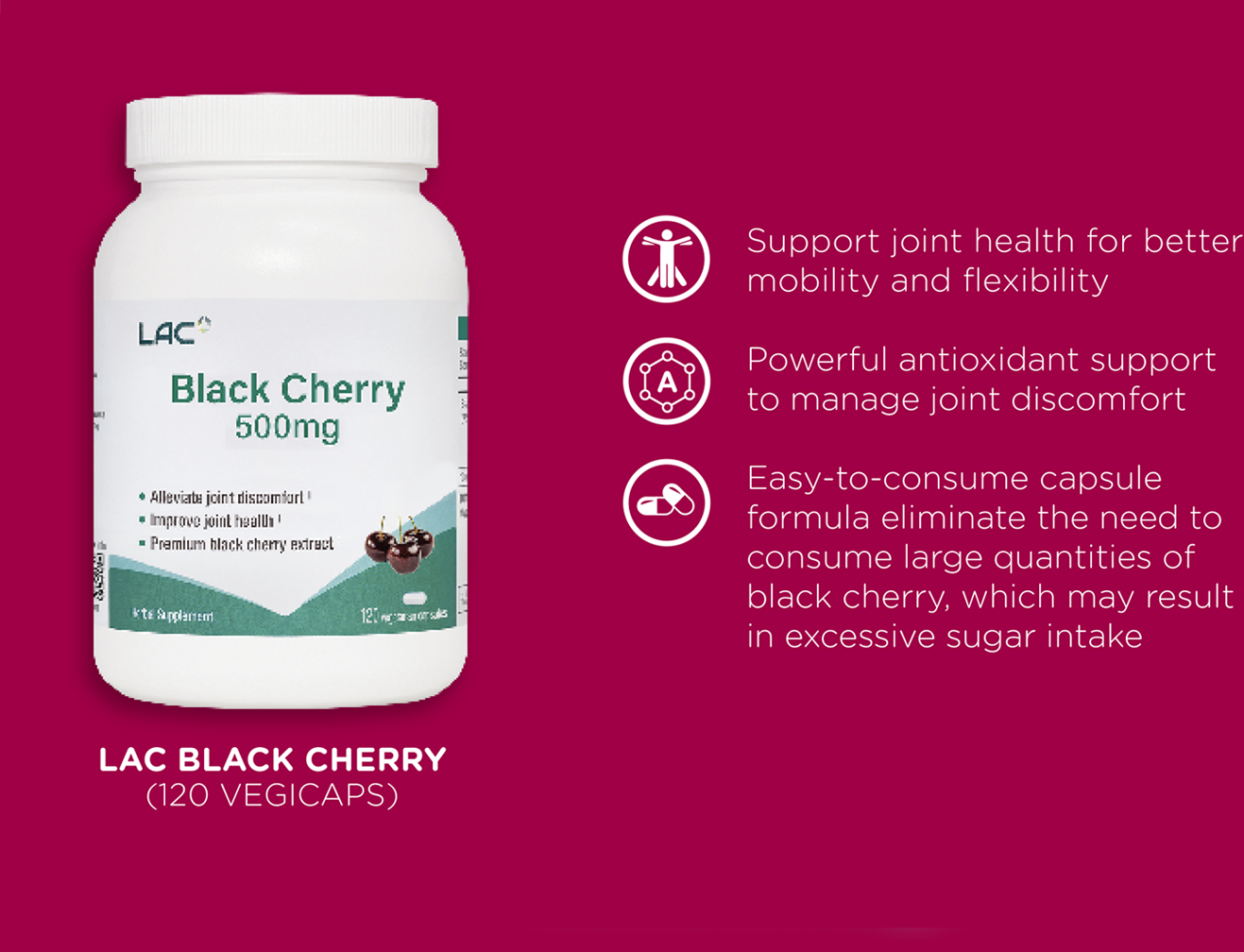


SOME JOINTS MOVE, SOME DO NOT
There are three main types of joints: Fibrous (immoveable), Cartilaginous (partially moveable), and Synovial (freely moveable) joints. An example of a fibrous or fixed joint is the skull.

JOINTS CONTAIN SENSORY NERVES CALLED BARORECEPTORS
These receptors react to atmospheric changes in the barometric pressure. When a thunderstorm is approaching and the barometric pressure drops, some people with joint pain can actually tell when a storm is gathering on the horizon.

BABIES DO NOT HAVE KNEECAPS
Babies are born with one cartilage plate that turns to bone and into a kneecap somewhere between the ages of 3 and 5.

ARTHRITIS IS A FAIRLY COMMON CONDITION
It is estimated that around 350 million men, women, and children worldwide suffer from arthritis. Arthritis can be the result of an autoimmune disorder or it can be a side effect of the ageing process as joints get worn out.

LIGAMENTS
Ligaments are short bands of tough fibrous connective tissue that function to connect one bone to another, forming the joint.

BALL AND SOCKET JOINTS
Ball and socket joints, such as hip and shoulder joints, are the most mobile type of joint. They allow you to move your arms and legs in many different directions.

HINGED DOOR
Hinge joints are those in the knee and elbow. They enable movement similar to the way a hinged door moves.










